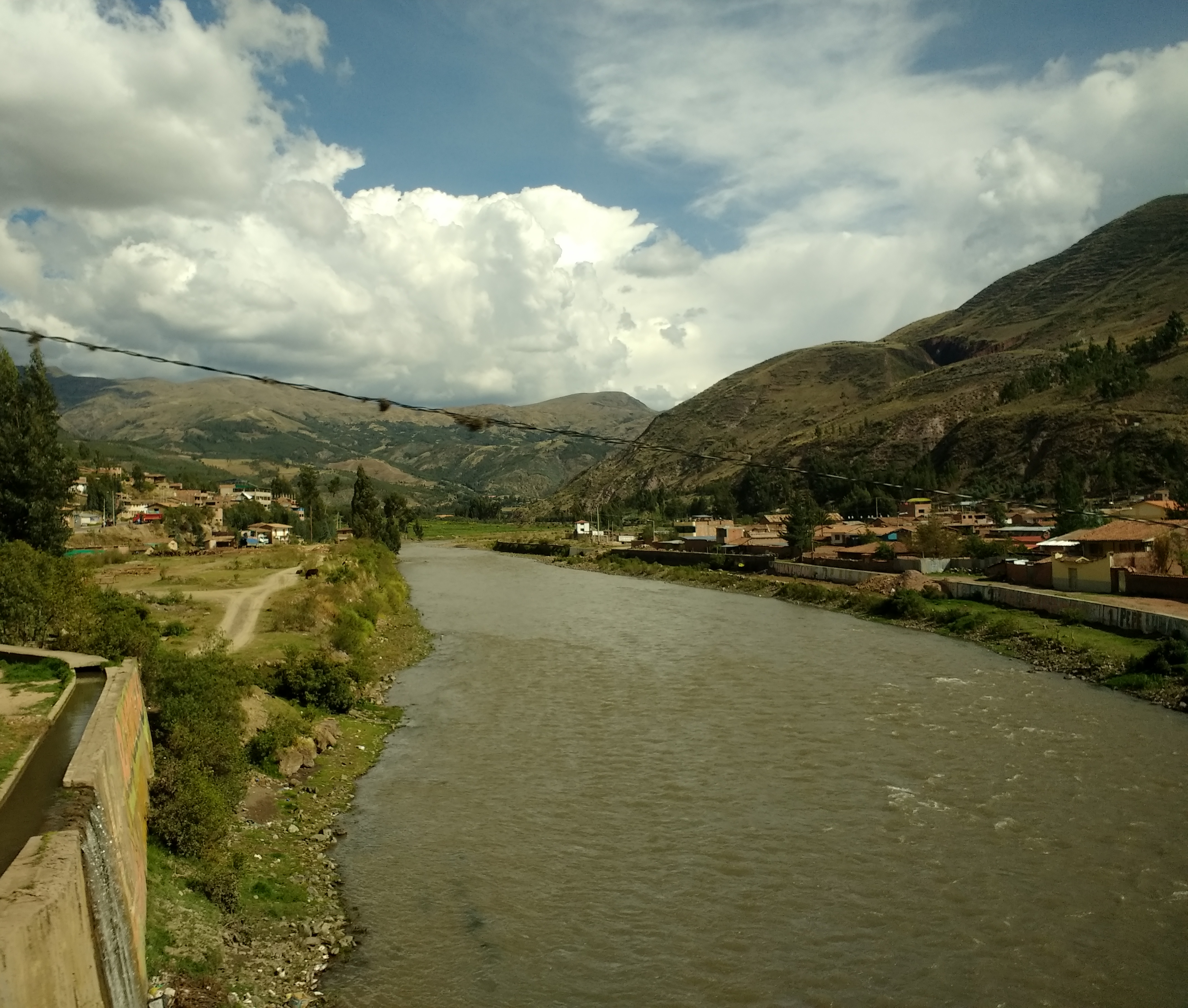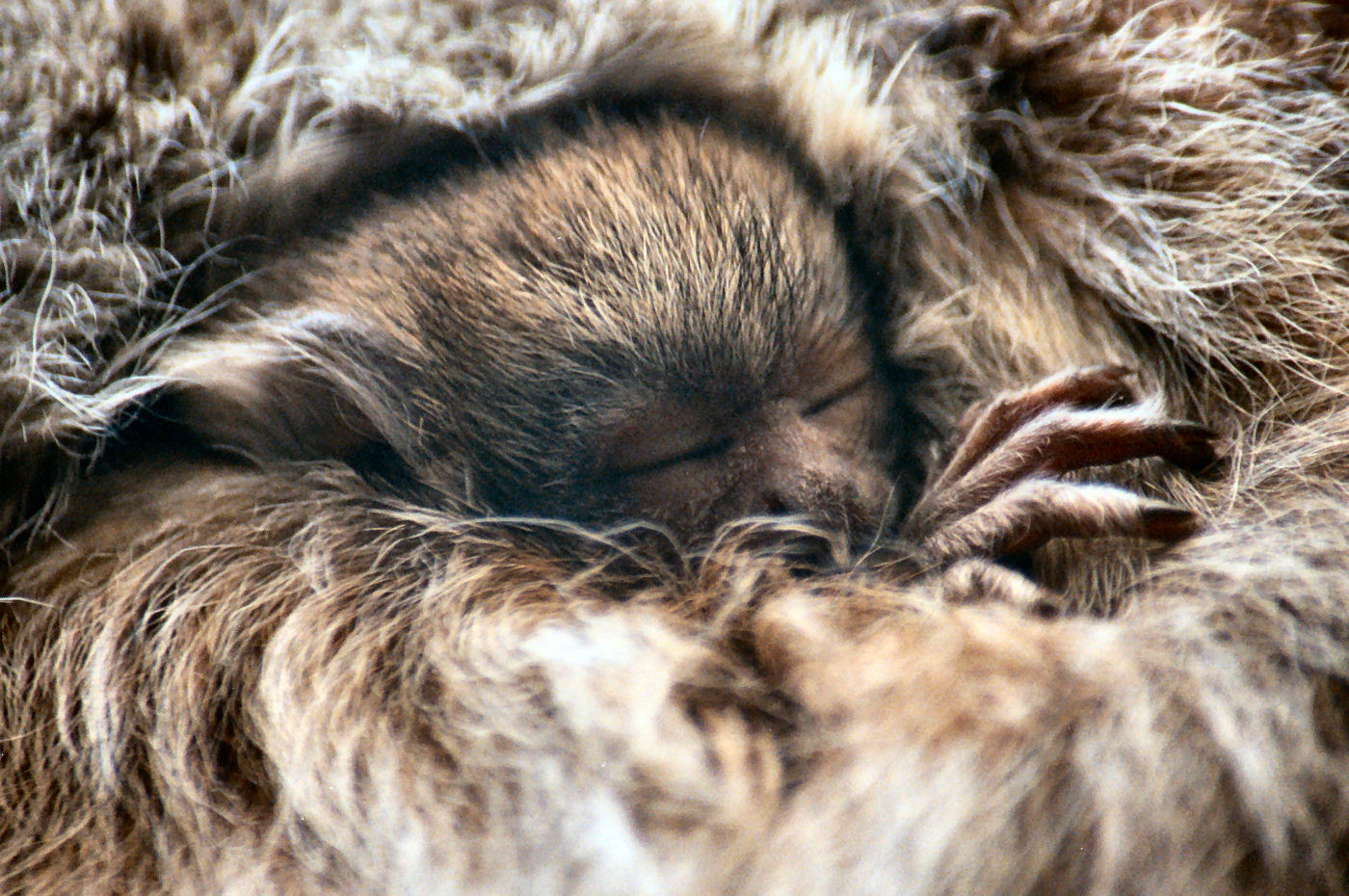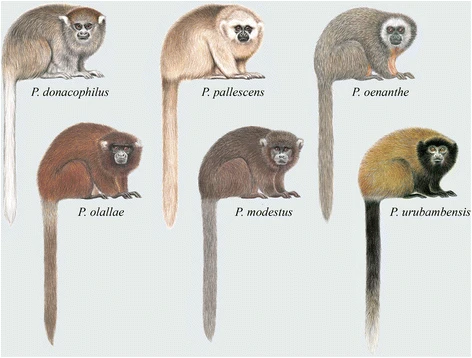|
Urubamba Brown Titi
The Urubamba brown titi monkey (''Plecturocebus urubambensis'') is a species of titi monkey, a type of New World monkey, endemic to Peru. Taxonomy Populations in this species were formerly classified within the brown titi (''P. brunneus''), but a 2015 study found it to be a distinct, undescribed species that also belonged in a different species group of ''Plecturocebus'' from ''P. brunneus'' (the '' P. donacophilus'' group), and thus described it as ''P. urubambensis''. The results of this study were followed by the IUCN Red List, ITIS, and American Society of Mammalogists. Distribution This species is endemic to Peru , image_flag = Flag of Peru.svg , image_coat = Escudo nacional del Perú.svg , other_symbol = Great Seal of the State , other_symbol_type = Seal (emblem), National seal , national_motto = "Fi ..., where it is found east of the Tambo River and west of the Urubamba, Manú, and Madre de Dios rivers. De ... [...More Info...] [...Related Items...] OR: [Wikipedia] [Google] [Baidu] |
Department Of Madre De Dios
Madre de Dios (, en, Mother of God) is a department and region in southeastern Peru, bordering Brazil, Bolivia and the Peruvian departments of Puno, Cusco and Ucayali, in the Amazon Basin. Its capital is the city of Puerto Maldonado. It is also the third largest department in Peru, after Ucayali and Loreto. However, it is also the least densely populated department in Peru, as well as its least populous department. It has one of the lowest poverty rates in Peru. The name of the department is derived from the Madre de Dios River, ultimately a tributary of the Amazon, and named by ethnic Spanish colonists. It is a very common Spanish language designation for the Virgin Mary, literally meaning Mother of God. Geography The department is almost entirely low-lying Amazon rainforest. The climate is warm and damp, with average temperatures around ax.: , min.: The rainy season is from December to March, when torrential rainfall causes rivers to swell and often overflow their banks ... [...More Info...] [...Related Items...] OR: [Wikipedia] [Google] [Baidu] |
Integrated Taxonomic Information System
The Integrated Taxonomic Information System (ITIS) is an American partnership of federal agencies designed to provide consistent and reliable information on the taxonomy of biological species. ITIS was originally formed in 1996 as an interagency group within the US federal government, involving several US federal agencies, and has now become an international body, with Canadian and Mexican government agencies participating. The database draws from a large community of taxonomic experts. Primary content staff are housed at the Smithsonian National Museum of Natural History and IT services are provided by a US Geological Survey facility in Denver. The primary focus of ITIS is North American species, but many biological groups exist worldwide and ITIS collaborates with other agencies to increase its global coverage. Reference database ITIS provides an automated reference database of scientific and common names for species. As of May 2016, it contains over 839,000 scientific names, ... [...More Info...] [...Related Items...] OR: [Wikipedia] [Google] [Baidu] |
Mammals Of Peru
Mammals () are a group of vertebrate animals constituting the class Mammalia (), characterized by the presence of mammary glands which in females produce milk for feeding (nursing) their young, a neocortex (a region of the brain), fur or hair, and three middle ear bones. These characteristics distinguish them from reptiles (including birds) from which they diverged in the Carboniferous, over 300 million years ago. Around 6,400 extant species of mammals have been described divided into 29 orders. The largest orders, in terms of number of species, are the rodents, bats, and Eulipotyphla (hedgehogs, moles, shrews, and others). The next three are the Primates (including humans, apes, monkeys, and others), the Artiodactyla ( cetaceans and even-toed ungulates), and the Carnivora (cats, dogs, seals, and others). In terms of cladistics, which reflects evolutionary history, mammals are the only living members of the Synapsida (synapsids); this clade, together with Saurop ... [...More Info...] [...Related Items...] OR: [Wikipedia] [Google] [Baidu] |
Madre De Dios River
The Madre de Dios River () is a river shared by Bolivia and Peru which is homonymous to the Peruvian region it runs through. On Bolivian territory it receives the Beni River, close to the town of Riberalta, which later joins with the Mamore River to become the Madeira River after the confluence. The Madeira is a tributary to the Amazon River. The Madre de Dios is an important waterway for the department of Madre de Dios, particularly Puerto Maldonado, the largest town in the area, and the capital of the department. Mango farming and gold mining are among the many industries on its beaches. Other important industries the Madre de Dios provides are selective logging and farming, both of which are serious environmental problems. Along the length of the river there are several national parks and reserves, notably Tambopata-Candamo National Park, Manú National Park (also known as Manú Biosphere Reserve) and Bahuaja-Sonene National Park. Hydrography The Madre de Dios serves ... [...More Info...] [...Related Items...] OR: [Wikipedia] [Google] [Baidu] |
Manú River
The Manú is a river in southeastern Peru. It runs down the eastern slopes of the Andes Mountains into the Amazon Basin. It runs through what is now protected as the Manú National Park, a vast Biosphere Reserve, home to arguably the highest concentration of biodiversity on Earth. Few people live along its length. Much of the park is off-limits to all but permitted scientists and the indigenous groups of Amazonian Indians, mostly of the Machiguenga tribe. The Manú is a tributary to the Madre de Dios River, which downriver joins the Madeira River, and ultimately the Amazon River. In the late 19th and early 20th centuries, this area of what was organized as the Madre de Dios region was exploited for the production of rubber during the rubber boom The Amazon rubber boom ( pt, Ciclo da borracha, ; es, Fiebre del caucho, , 1879 to 1912) was an important part of the economic and social history of Brazil and Amazonian regions of neighboring countries, being related to the extrac ... [...More Info...] [...Related Items...] OR: [Wikipedia] [Google] [Baidu] |
Urubamba River
The Urubamba River or Vilcamayo River (possibly from Quechua ''Willkamayu'', for "sacred river") is a river in Peru. Upstream it is called Vilcanota River (possibly from Aymara ''Willkanuta'', for "house of the sun"). Within the La Convención Province the naming changes to Urubamba. A partially navigable headwater of the Amazon River, it rises in the Andes to the southeast of Cuzco. It originates on the slopes of Khunurana in the Puno Region, Melgar Province, near the La Raya pass. It flows north-north-west for 724 kilometers before coalescing with the Tambo River to form the Ucayali River. The Urubamba is divided into Upper Urubamba and Lower Urubamba, the dividing feature being the Pongo de Mainique, an infamous whitewater canyon. Upper Urubamba The Upper Urubamba (''Alto Urubamba'') valley features a high population and extensive irrigation works. A number of ruins of the Inca Empire lie in the Sacred Valley, including the Incan city of Machu Picchu, Patallaqta, Pikillaq ... [...More Info...] [...Related Items...] OR: [Wikipedia] [Google] [Baidu] |
Tambo River (Peru)
The Tambo River (Spanish: Río Tambo) is a Peruvian river on the eastern slopes of the Andes. The name only refers to a relatively short section; about long. It starts at the confluence of the Ene and Perené Rivers at the town of Puerto Prado. From here the Tambo River flows in an easterly direction and then turns north. When merging with the Urubamba River at the town of Atalaya, it becomes the Ucayali River. The Tambo is part of the headwaters of the Amazon River whose origin is the Mantaro River The Mantaro River ( es, Río Mantaro, qu, Hatunmayu) is a long river running through the central region of Peru. Its Quechua name means "great river". The word "Mantaro" may be a word originally from the Asháninka language, who live downstream a ... at Cordilerra Ruminator Cruz. Tributaries of the Amazon River Rivers of Peru Tributaries of the Ucayali River Rivers of Junín Region Rivers of Ucayali Region {{Peru-river-stub ... [...More Info...] [...Related Items...] OR: [Wikipedia] [Google] [Baidu] |
American Society Of Mammalogists
The American Society of Mammalogists (ASM) was founded in 1919. Its primary purpose is to encourage the study of mammals, and professions studying them. There are over 4,500 members of this society, and they are primarily professional scientists who emphasize the importance of public policy and education. There are several ASM meetings held each year and the society manages several publications such as the ''Journal of Mammalogy The ''Journal of Mammalogy'' is a bimonthly peer-reviewed scientific journal published by Oxford University Press on behalf of the American Society of Mammalogists. Both the society and the journal were established in 1919. The journal covers r ...'', ''Special Publications'', '' Mammalian Species'', and ''Society Pamphlets''. The best known of these is the ''Journal of Mammalogy''. The ASM also maintains ''The Mammal Image Library'' which contains more than 1300 mammal slides. A president, vice president, recording secretary, secretary-treasurer, a ... [...More Info...] [...Related Items...] OR: [Wikipedia] [Google] [Baidu] |
IUCN Red List
The International Union for Conservation of Nature (IUCN) Red List of Threatened Species, also known as the IUCN Red List or Red Data Book, founded in 1964, is the world's most comprehensive inventory of the global conservation status of biological species. It uses a set of precise criteria to evaluate the extinction risk of thousands of species and subspecies. These criteria are relevant to all species and all regions of the world. With its strong scientific base, the IUCN Red List is recognized as the most authoritative guide to the status of biological diversity. A series of Regional Red Lists are produced by countries or organizations, which assess the risk of extinction to species within a political management unit. The aim of the IUCN Red List is to convey the urgency of conservation issues to the public and policy makers, as well as help the international community to reduce species extinction. According to IUCN the formally stated goals of the Red List are to provi ... [...More Info...] [...Related Items...] OR: [Wikipedia] [Google] [Baidu] |
Peru
, image_flag = Flag of Peru.svg , image_coat = Escudo nacional del Perú.svg , other_symbol = Great Seal of the State , other_symbol_type = Seal (emblem), National seal , national_motto = "Firm and Happy for the Union" , national_anthem = "National Anthem of Peru" , march = "March of Flags" , image_map = PER orthographic.svg , map_caption = , image_map2 = , capital = Lima , coordinates = , largest_city = capital , official_languages = Peruvian Spanish, Spanish , languages_type = Co-official languages , languages = , ethnic_groups = , ethnic_groups_year = 2017 , demonym = Peruvians, Peruvian , government_type = Unitary state, Unitary Semi-presidential system, semi-presidential republic , leader_title1 = President of Peru, President ... [...More Info...] [...Related Items...] OR: [Wikipedia] [Google] [Baidu] |
White-eared Titi
The white-eared titi monkey (''Plecturocebus donacophilus'') also known as the Bolivian titi or Bolivian gray titi, is a species of titi monkey, a type of New World monkey, from eastern Bolivia and an area of western Brazil. The species has a range that extends east from the Manique River in Beni Department, Bolivia to southern Rondônia in Brazil. The southern end of its range includes forests around the city of Santa Cruz de la Sierra. It is a medium-sized monkey with a grey back, orange underside and distinctive white ear tufts. It has an omnivorous diet, eating fruits, other plant materials and invertebrates. It is predated upon primarily by raptors, though felids and other monkey species have been known to attack the species. It is a monogamous species and lives in small groups of two to seven members consisting of the pair and their offspring. The family group has a home range of and the adults have a complex vocal repertoire to maintain their territory. It is also kno ... [...More Info...] [...Related Items...] OR: [Wikipedia] [Google] [Baidu] |
Plecturocebus
''Plecturocebus'' is one of three genera of titi monkeys. Historically, these monkeys were monogeneric, being placed in a single genus: ''Callicebus'' Thomas, 1903. Owing to the great diversity found across titi monkey species, a new genus-level taxonomy was proposed in 2016 that recognises three genera within the subfamily Callicebinae; ''Plecturocebus'' Byrne et al., 2016 for the Amazonian and Chaco titis of the ''moloch'' and ''donacophilus'' groups; ''Cheracebus ''Cheracebus'' is one of three genera of titi monkeys. Monkeys in this genus, particularly the type species '' Cheracebus lugens'', are sometimes referred to as widow titi monkeys. Historically, titis were monogeneric, comprising only the genus ...'' Byrne et al., 2016 for the species of the ''torquatus'' group (Widow titis); and ''Callicebus'' Thomas, 1903 ''sensu stricto'', for species of the Atlantic Forest ''personatus'' group. ''Plecturocebus'' is derived from the Latin forms of three Greek words: plektos, m ... [...More Info...] [...Related Items...] OR: [Wikipedia] [Google] [Baidu] |



